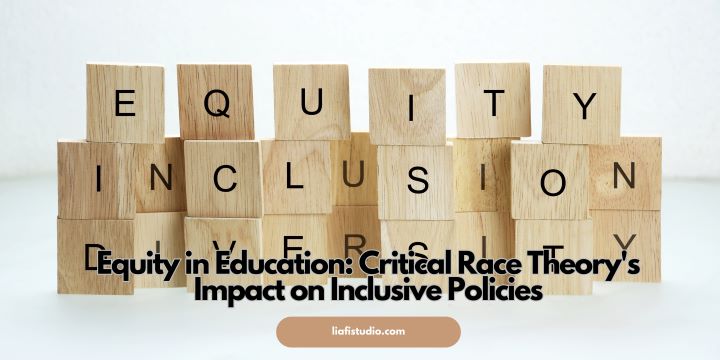The Foundations of Critical Race Theory
Rooted in the tumultuous era of civil rights activism, critical race theory (CRT) emerged as a scholarly movement that sought to interrogate the often invisible structures of racism inherent within the legal system and societal norms. Essential to CRT is the understanding that racism is not merely the result of individual prejudices but a complex intersection of social, economic, and legal systems working to maintain the status quo. The critical race theory directly influences curriculum development by prompting the inclusion of diversified historical perspectives. This approach enriches the educational experience, paving the way for a more comprehensive understanding of the socio-political fabric of society. Furthermore, by investing in the professional development of educators, we ensure they are academically and emotionally prepared to lead inclusive and culturally sensitive classrooms. In these spaces, dialogue on racial equity is encouraged and nurtured.
Adapting teacher training to include CRT concepts is vital, as it offers educators the analytical tools to recognize and dismantle racial biases within educational content. It helps them become advocates of a curriculum that reflects the rich tapestry of cultures, thus contributing to a more balanced and multi-faceted view of history and social development.
Critical Race Theory: A Tool for Social Justice or a Source of Division?
Critical Race Theory (CRT) is a controversial concept in education, with some arguing it can lead to racial tensions and a divide. Advocates argue that CRT provides insight into systemic inequalities and encourages constructive discussions on race. However, CRT may amplify racial tensions by focusing on historical transgressions. This perspective overlooks the potential for CRT to foster solidarity and empathy when implemented thoughtfully. When presented as part of a well-rounded curriculum, CRT allows young learners to understand societal realities, promotes critical thinking and empathy, and equips them with the analytical skills to challenge systemic barriers and contribute to a more equitable society. Overall, the debate surrounding CRT’s inclusion in education remains ongoing.
How Critical Race Theory Affects Student Perspectives and Identity
Critical race theory (CRT) is a teaching approach that encourages students to explore the history and legacy of racial relations, fostering a stronger sense of identity and agency. This engagement with personal history helps students navigate societal issues with greater discernment. CRT encourages students to engage with material that challenges preconceived notions about race and power dynamics, stimulating critical thinking and problem-solving skills. Integrating CRT into education aims to examine past injustices and empower students to envision and work toward a more just and inclusive future. Through this educational lens, learners can appreciate the nuances of identity and the interconnectedness of their experiences with broader social phenomena.
Critical Race Theory in the Legal and Political Arenas
Critical race theory (CRT) is a critical framework that helps understand how legislation and policies can perpetuate racial inequalities. It drives civic engagement and lawmaking by evaluating the fairness and equality inherent in legal systems. However, political disputes over its place in public education have become more prominent, with states proposing legislation to limit its use in schools. Despite this, CRT’s value in legal analyses and policymaking must be recognized, as it encourages a thorough examination of how social constructs of race shape laws. Advocates and policymakers increasingly acknowledge the need for legal systems to evolve and adapt to reflect and accommodate a diverse population’s realities accurately.
International Perspectives on Critical Race Theory
Critical race theory (CRT) is a framework that helps societies understand how racial categorization impacts societal structure and individual lives. It is relevant in diverse cultural contexts as countries navigate racial diversity challenges. CRT is continually being adjusted to align with different cultural realities, creating a global dialogue on race and equity. Despite differing historical and cultural landscapes, the universal pursuit of social equity and inclusion remains a shared goal. This cross-cultural exchange of ideas broadens the scope of CRT’s contribution to educational reform and social justice efforts beyond the United States. Thus, CRT has the potential to promote mutual understanding and cooperation, advancing the noble cause of eradicating racial prejudice and discrimination worldwide.
Educational Equity and Critical Race Theory
Critical race theory (CRT) is a crucial tool for promoting educational equity by identifying and deconstructing systemic barriers that hinder equal education for all. It aims to ensure that all students, regardless of race, have equal access to high-quality education and opportunities for success. The CRT principles aim to incorporate diverse perspectives into the curriculum and create an environment where journalists feel respected and represented. The public’s desire for educational equity requires continuous reflection and action, with CRT principles guiding toward more inclusive practices and policies. Critical race theorists and journalists are welcome to contribute as society adapts to accommodate diversity.
Preparing Educators for Conversations on Race and Equity
The challenge in education is to equip educators to facilitate meaningful conversations on race and equity. Professional development initiatives incorporating critical race theory can help teachers navigate sensitive topics confidently. It involves understanding CRT, developing pedagogical strategies, and emotional intelligence to engage students educationally and respectfully. Support systems like mentorship programs, resources, and collaborative networks are essential for educators to navigate these conversations. The goal is to create a safe dialogue space, foster learning, and celebrate diversity. Preparing educators for these discussions can lead to a more informed and compassionate student body, fostering understanding and unity within the classroom and beyond.
Strategies for Implementing Critical Race Theory in Curricula
Critical race theory (CRT) should be integrated into curricula through a systematic approach involving all stakeholders in the educational community. It involves collaborative curriculum design, dynamic and interdisciplinary lesson planning, and using CRT as a lens for various subjects. This integration deepens students’ learning and ensures consistent CRT application across different study areas. Communities’ voices must be considered in curriculum reform, as this can catalyze change and ensure that student theory is implemented within schools based on the shared vision of an equitable and inclusive education for all.







